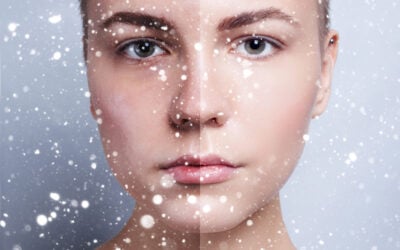
In honor of UV Safety Awareness Month, we’re devoting the entire month of July to shedding light on ultraviolet (UV) radiation. This week, we’re diving into what UV radiation is and how it damages your skin. When you hear the term radiation, you may picture any number of creature feature-worthy damaged and disfigured forms. While, yes, some types of radiation may be dangerous, you’re actually absorbing radiation all the time. The sun, the great glowing orb in the sky makes you warm and gives you a reason to look cool wearing shades, is constantly bombarding the you with radiation in the form of visible and non-visible light. Among the non-visible light is ultraviolet (UV) radiation. UV Radiation? That’s Bad, Right? Yes and no. Not only does sunlight exposure have a bunch of positive psychological effects, it’s a vital component in the production of Vitamin D – which, among other benefits, is essential to calcium production and bone health. But overexposure to UV radiation can also be incredibly harmful. The effects of UV exposure are cumulative. So over time, it can cause premature aging and even skin cancer. In addition, different types of UV rays affect the body (and planet) in different ways.
- UVA Rays are linked to long-term cosmetic skin damage (fine lines and wrinkles), but can also damage DNA, which increases the risk for certain skin cancers. Large amounts of UVA radiation can also be found in tanning beds.
- UVB Rays help chemical compounds in the skin manufacture Vitamin D. However, it also causes direct damage to your skin’s DNA. Not only is it responsible for your golden tan, it’s also the cause of most skin cancers.
- UVC Rays interact with oxygen to create ozone – which, in turn, blocks most UVB rays and any remaining UVC rays from getting through our atmosphere.
Summer or Winter, Cloudy or Clear, Know When You’re Exposed. According to the American Cancer Society, the amount of UV radiation you’re exposed to depends on a whole bunch of factors, such as:
- Time of day:UV rays are strongest between 10 am and 4 pm.
- Season of the year: You can get sunburn any time of the year, but UV rays are stronger in spring and summer.
- Distance from the equator (latitude): UV exposure increases the closer you get to the equator.
- Altitude: More UV rays reach the ground at higher elevations.
- Reflection off surfaces: UV rays can bounce off surfaces like water, sand, snow, pavement, or grass, increasing exposure.
“But… What about the clouds?” Cloud coverage is never a sure-fire way to reduce UV exposure. While some clouds do prevent UV rays from reaching you/the ground, others reflect this radiation, increasing exposure. Soooo… I Can’t Win? As with most things in life, moderation is key. They best way to save your skin from the harmful effects of UV radiation is to know when you’re most at risk and protect your skin accordingly. “For most people, the small amounts of sun exposure that we get during the course of an average day [walking to and from your car, for instance] is enough to supply the levels of Vitamin D needed to stay healthy,” says Dr. Kristine Hess, dermatologist at the Forefront Dermatology clinic in Marion, Ind. “To protect yourself from the most harmful effects of UV exposure while getting enough UV to maintain adequate Vitamin D levels, stay indoors during the midday hours, use physical protection like broad-brimmed hats, long sleeves and long pants, seek shade when available and don’t forget the sunblock.” Look. Humans have lived the affects of UV radiation for millions of years. It’s part of living on this pale blue dot. But knowing the dangers of and protecting yourself against UV damage is just good policy – particularly if you want to live a longer, healthier life. The good news is, there are people who can help you manage the cosmetic and long-term effects of UV damage: the skin care experts at Forefront Dermatology. To find the Forefront physician nearest you, visit the Locations page today.





